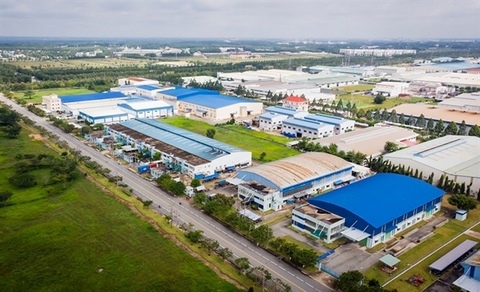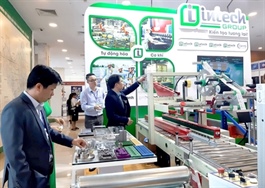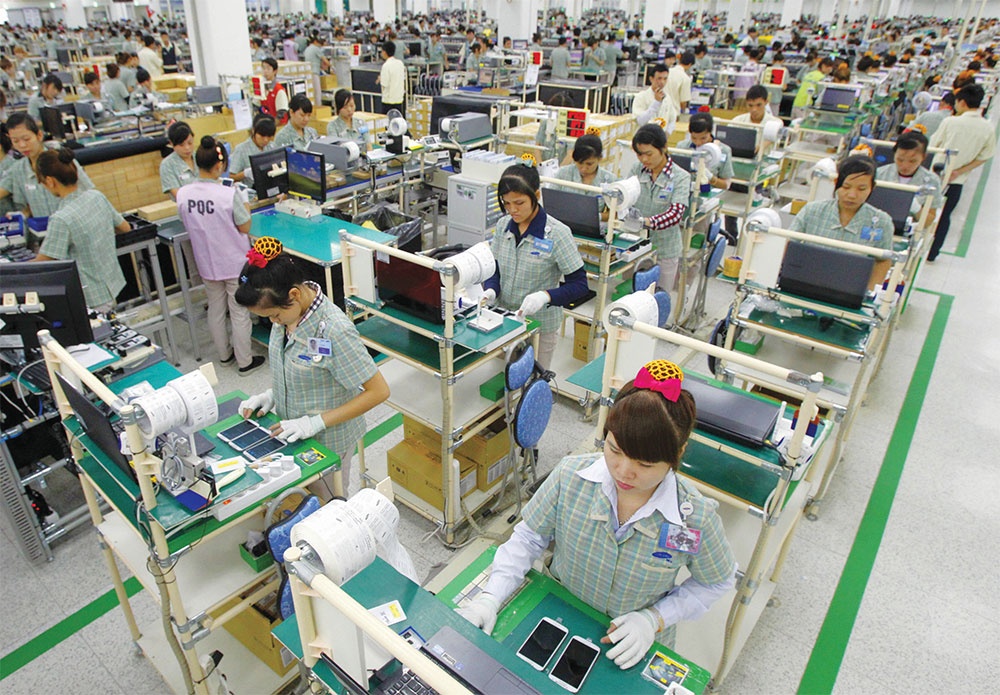Việt Nam promotes development of green industrial parks
Việt Nam promotes development of green industrial parks
Many localities in Việt Nam have promoted converting traditional industrial parks to eco-industrial parks and also developed new green industrial parks.

The transformation of traditional industrial parks into sustainable green industrial parks is achieved by promoting green production and efficient use of resources. — Photo baoxaydung.com.vn |
This is a crucial task of the National Green Growth Strategy 2021-2030, vision to 2050, and the National Action Plan for implementing the 2030 sustainable development agenda.
According to experts, developing a circular economy has become a trend among countries, especially as the world's resources are increasingly depleted.
The transformation of traditional industrial parks into sustainable green ones is achieved by promoting green production, efficient use of resources, and exchanging energy and by-products among enterprises within the parks.
This transformation has mobilised significant capital from the private economic sector for green industry solutions, ensured energy security, sustainable development and response to climate change, and improved the community's quality of life surrounding the industrial parks.
For the long term, besides converting existing industrial parks, Việt Nam would build new ecological industrial parks meeting the requirements of design and planning and attracting investment projects that have environmentally friendly production processes and technologies, efficient use of resources, waste reduction, and re-use of raw materials and energy.
In recent years, many industrial parks have successfully converted to ecological environments, such as Khánh Phú Industrial Park, Gián Khẩu Industrial Park (Ninh Bình), Hòa Khánh Industrial Park (Đà Nẵng) and Trà Nóc Industrial Park 1 and 2 (Cần Thơ).
Those industrial parks have about 72 enterprises implementing about 900 energy-saving and clean production solutions, saving VNĐ76 billion per year, about 22,000 MWh of electricity, 600,000 cu.m of water, 140 TJ of fossil fuels, and nearly 3,600 tonnes of chemicals and waste. These solutions have also reduced carbon volume each year. Implementing these solutions has also attracted a total investment of about VNĐ76 billion from the private sector.
Vương Thị Minh Hiếu, deputy director of the Department of Economic Zones Management, Ministry of Planning and Investment, said the ministry has coordinated with the United Nations Industrial Development Organisation (UNIDO) to further replicate the eco-industrial park model in Hải Phòng, Đồng Nai and HCM City via the project on deployment of eco-industrial parks in Việt Nam according to the approach from the Global Eco-Industrial Park Programme. That effort has achieved very encouraging results.
As of October 2023, the project supported 68 businesses in three industrial parks of Deep C - Đình Vũ, Amata Đồng Nai and Hiệp Phước, contributing to optimising the efficiency of resource use in the industrial parks and adjacent urban areas. They implemented about 300 solutions for efficient use of resources and cleaner production, and 62 solutions saved 23 million kWh of electricity, 384,000 cu.m of water and $31 million per year, and reduced CO2 emissions by 24,000 tonnes yearly.
However, there are some limitations in developing industrial parks because industrial park development planning has not clearly shown a strategic and overall vision.
In some locations, industrial park development planning does not reflect the actual development needs and ability to attract investment. That has led to the quality and efficiency of investment attraction falling short of expectations in terms of effectively using land for national socio-economic development and ensuring sustainable and balanced development of economic, environmental and social pillars.
Besides, the traditional industrial parks in the same locality still lacked cooperation to increase competitiveness and connection with industrial parks in neighbouring localities.
The enterprises in the same industrial park have not taken full advantage of each other to have effective production and business development, save costs and take advantage of available resources.
Việt Nam is attracting more high-quality foreign direct investment (FDI) to promote economic growth and international economic integration. Therefore, preparing industrial infrastructure is an urgent requirement to meet the increasingly strict requirements of foreign investors.
Of which, the development of eco-industrial parks is considered vital to solve environmental limitations and inadequacies, reduce resource waste, and increase value chain engagement.
Therefore, Việt Nam must continue innovating and improving existing institutions, policies and regulations and adjusting goals and orientations for developing industrial parks and economic zones. These steps will adapt to the new context and contribute to implementing the national socio-economic development strategy.





















